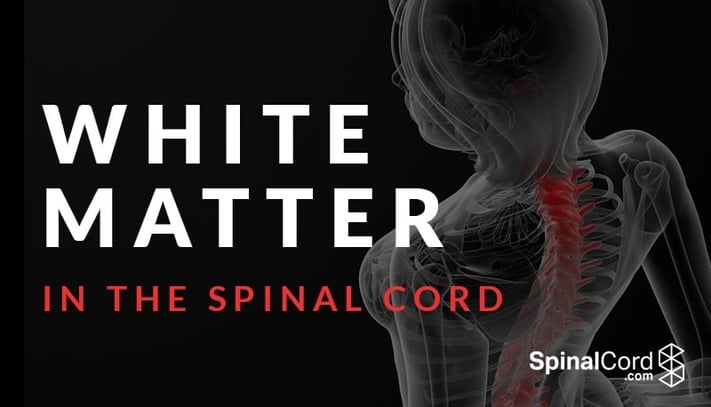White Matter in the Spinal Cord
 The central nervous system, which consists of the brain and spinal cord, contains two types of tissue. White matter appears pinkish-white, while gray matter is a darker hue. Gray matter contains neural cells, dendrites, and axon terminals, while white matter consists of axons and myelin, and plays a key role in nerve cells' ability to connect to one another.
The central nervous system, which consists of the brain and spinal cord, contains two types of tissue. White matter appears pinkish-white, while gray matter is a darker hue. Gray matter contains neural cells, dendrites, and axon terminals, while white matter consists of axons and myelin, and plays a key role in nerve cells' ability to connect to one another.
Injury to either variety of tissue can interfere with your central nervous system's ability to function. Knowing which tissue is injured can help you predict your recovery.
What is White Matter and What Does it Do?
White matter in the spinal cord is sometimes called superficial tissue because it is located in the outer regions of the brain and spinal cord. Gray matter is situated closer to the center of the central nervous system. Gray matter performs the functions typically associated with the central nervous system, including cognition, initiating brain signals that travel down the spinal cord and into the body, and processing nervous system signals.
White matter's primary job is to coordinate and send brain signals from one region of the cerebrum to another, and also from the cerebrum to the spinal cord and other areas of the brain. A few generations ago, doctors thought that white matter was “passive” tissue that merely insulated and protected gray matter. We now know that it plays a central role in the functioning of the brain and spinal cord.
White matter draws its white appearance from its composition. Myelin, a sort of protective coating for neural axons, is made of lipid tissue that appears white on a freshly dissected brain. White matter also contains lots of glial cells.
Most doctors talk about the “tracts” that make up white matter. These are various pathways through which nerve signals are sent down axons. The three key tracts are:
- Commissural tracts, which travel from one cerebral hemisphere to another via commissures. Most of these tracts pass through the corpus callosum, a dense bundle of nerves that joins the two hemispheres of the brain. Commissural tracts allow the brain's two hemispheres to communicate.
- Association tracts, which connect different areas of the same brain hemisphere.
- Projection tracts with extend from high brain regions to areas deep within the brain and spinal cord, relaying information from the cerebrum to the rest of the body.
Effects of White Matter Injuries
Most spinal cord injury survivors have injuries to both their gray and white matter, particularly when the injuries are severe enough to cause paralysis or a significant loss in sensation. When you suffer an injury to your brain's white matter only, you will still retain movement and sensation, but your brain may have difficulty coordinating and sending signals.
Multiple sclerosis occurs when the brain's white matter steadily breaks down, and interferes with movement and muscle coordination. Doctors now believe that Alzheimer's and other neurodegenerative diseases result from brain plaques in white matter. Some symptoms of white matter injuries include:
- Challenges with executive function—the ability to coordinate, plan, and monitor your thought processes.
- Difficulties coordinating muscle movements; you may feel shaky or uncoordinated.
- Problems with memory, spatial reasoning, and planning.
- Difficulty controlling your emotions, or changes in your psychological health.
Interested in learning more about the basics of brain in spinal cord injury anatomy? Download our free eBook below.
Stay Updated on Advancements On Traumatic Brain &
Spinal Cord Injuries
About the Author




